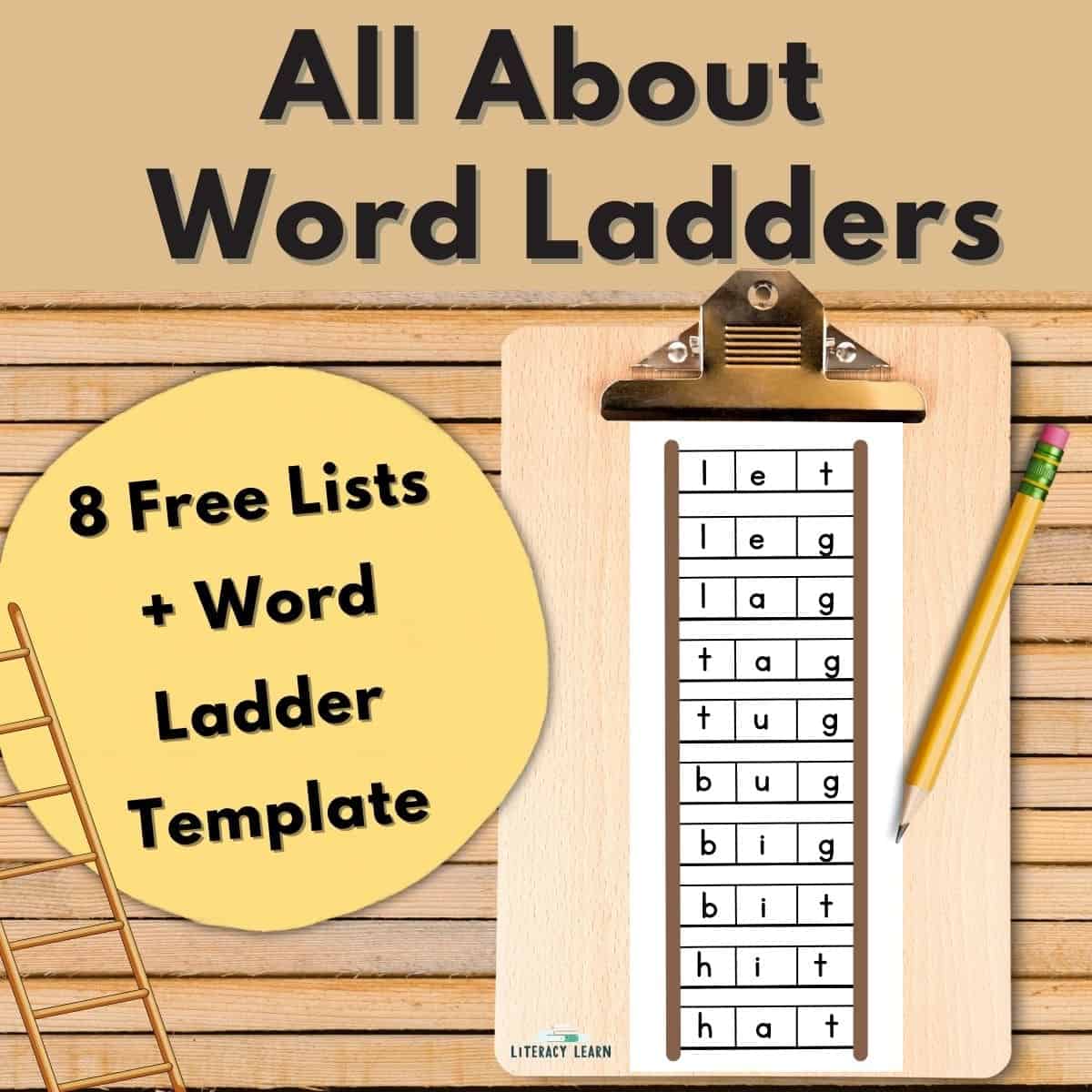
This post may contain affiliate links. As an Amazon affiliate, we earn from qualifying purchases. See our disclosure policy.

Learn why word ladders (aka word chains) are an effective strategy when teaching kids to read and spell with accuracy. Get two free printables so you can begin using word ladders in your classroom today!

Table of Contents (Skip Ahead)
Word ladders, which are also known as word chains, are an instructional tool used to help children learn to read and spell while developing phonemic awareness, phonics, and vocabulary skills.
There’s a very basic process to use word ladders: Kids begin with one word that follows a phonics skill they’re working on. Then, they’re asked to make a bunch of other words by making simple changes to the letters of the word that came before.
When students add, remove, or rearrange letters, they have to analyze the sound-symbol relationship that words have. Read more about phonemes (sounds) and graphemes (letters).
👉 Example: If you’ve taught your students closed syllable words and all short vowels, your word ladder may look like: hat ➡ hit ➡ bit ➡big ➡ bug ➡ tug ➡ tag ➡ lag ➡ leg ➡ let.

👉 Students start on the bottom rung and move up the ladder, changing the letters to represent the new sounds and spelling new words!
Through this simple chaining activity example, students have analyzed all five vowel sounds, plus beginning sounds and ending sounds.
👉 Repeated practice with this activity provides a bridge between phonological awareness and phonics, the two first building blocks of reading.
Word ladders have TONS of benefits for students. In general, using them helps build kids’ decoding and encoding skills.
When using word ladders, students use phoneme-grapheme mapping, connecting sounds (phonemes) to written letters (graphemes).
This is an important research-based Science of Reading principle that has shown us how the brain stores words to become automatic sight words.
Word ladders force kids to listen to words, analyze the sounds, and connect them to written letters. The words usually change by one phoneme (sound), so students first need to decide which sound is changing in the word.
This is called phoneme manipulation, a phonemic awareness skill.
Then, students need to think about which grapheme (written letters) will represent the new sound, a phonics skill. It’s the perfect bridge between phonological awareness and phonics.
Best of all, children LOVE this activity! It’s challenging, fun, and rewarding when they make it to the top!
Students don’t even realize that they are engaged in a learning activity that reinforces important phonics skills they’ve been taught.
And it only takes a few minutes each day!
To help you get started, we’re giving away a FREE resource for word chaining. Included are 8 word lists with 80+ CVC words. Also included is a word ladder with sound boxes for 3 phoneme words.
Time needed: 10 minutes
How to Use Word Ladders
Looking for more? This is part of a bigger Word Chaining Resource that covers 780 words and tons of phonics skills, from CVC words to words with advanced diphthongs and everything in between.

👉 Word ladders are great for kids in K-3 grade, or any students working on phonics.
👉 Word chaining activities are best used with small groups or whole groups with a teacher (or instructional assistant, volunteer, or advanced reader) reading the list aloud.
👉 Use this activity for encoding with small groups or with your entire class! Then, extend the activity and have students practice decoding the words quickly!
👉 Send the word ladders home for repeated review and practice.
👉✨This is the activity I pull out when administrators walk into my classroom to observe. My students are very familiar with the procedure (since we use it for each skill).
I always have extra ladders printed and sitting near my small group table, and then I quickly pull out my word lists and just like that! We’re doing meaningful and targeted phonics instruction that makes me look like a teacher of the year (with no prep)!
We hope you are encouraged to start implementing word ladders as a common instructional strategy within your classroom!

We’d love to hear about your experience using these printables! Please leave a comment below or tag us on Instagram @literacylearn.
DOWNLOAD TERMS: All of our resources and printables are designed for personal use only in homes and classrooms. Each teacher must download his or her own copy. You may not: Save our files to a shared drive, reproduce our resources on the web, or make photocopies for anyone besides your own students. To share with others, please use the social share links provided or distribute the link to the blog post so others can download their own copies. Your support in this allows us to keep making free resources for everyone! Please see our Creative Credits page for information about the licensed clipart we use. If you have any questions or concerns regarding our terms, please email us. Thank you!